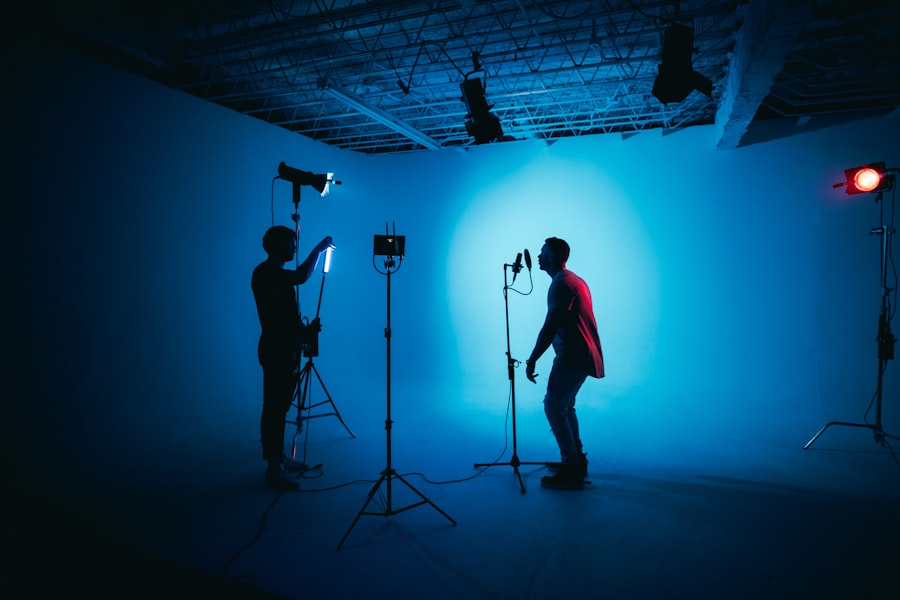In the realm of documentary filmmaking, pacing and tension serve as the backbone of a compelling narrative. These elements are crucial in guiding the audience’s emotional journey, ensuring that viewers remain engaged from the opening scene to the closing credits. A well-paced documentary can evoke a range of emotions, from curiosity to empathy, while effectively conveying its message.
When executed skillfully, pacing and tension can transform a simple recounting of facts into a gripping story that resonates with viewers long after they have finished watching. Moreover, the interplay between pacing and tension can significantly influence how information is perceived and retained. A documentary that maintains a steady rhythm can help audiences digest complex topics, while moments of heightened tension can underscore critical points, making them more memorable.
This dynamic relationship not only enhances the storytelling but also fosters a deeper connection between the audience and the subject matter, ultimately leading to a more impactful viewing experience.
Key Takeaways
- Pacing and tension are crucial elements in documentaries to keep the audience engaged and create a compelling viewing experience.
- Understanding pacing involves maintaining a balance between fast and slow moments to keep the audience’s attention and build anticipation.
- Creating tension in documentaries involves building suspense and drama through storytelling techniques, such as foreshadowing and conflict development.
- The role of editing is essential in controlling the pacing and tension of a documentary, as it determines the flow and impact of the storytelling.
- Sound and music play a significant role in enhancing pacing and tension by creating emotional cues and heightening the audience’s experience.
Understanding Pacing: How to Keep the Audience Engaged
Pacing in documentaries refers to the rhythm and flow of the narrative, which is essential for maintaining audience engagement. Filmmakers must carefully consider how quickly or slowly to present information, balancing moments of action with periods of reflection. A documentary that moves too quickly may overwhelm viewers with information, while one that lingers too long on certain scenes risks losing their interest.
Striking the right balance is key to keeping the audience invested in the story being told. To achieve effective pacing, filmmakers often employ various techniques, such as varying shot lengths, utilizing transitions, and incorporating visual storytelling elements. For instance, quick cuts during moments of high energy can create a sense of urgency, while longer takes can allow viewers to absorb more profound moments.
Additionally, the use of cliffhangers or unresolved questions can encourage audiences to stay engaged, eager to see how the narrative unfolds. By mastering these techniques, filmmakers can create a captivating rhythm that draws viewers into the documentary’s world.
Creating Tension: Building Suspense and Drama in Documentaries

Tension is an essential component of storytelling that adds depth and intrigue to documentaries. It serves to heighten emotions and keep audiences on the edge of their seats, eager to discover what happens next. Filmmakers can create tension through various means, such as introducing conflict, presenting obstacles, or revealing unexpected twists.
By carefully crafting these elements, they can build suspense that captivates viewers and compels them to invest emotionally in the narrative. One effective way to create tension is by establishing stakes early in the documentary. When audiences understand what is at risk for the subjects involved, they are more likely to become emotionally invested in the outcome.
Additionally, filmmakers can use pacing strategically to amplify tension; for example, slowing down the narrative during critical moments can heighten anticipation and make viewers more anxious about what will happen next. By weaving together these techniques, filmmakers can create a rich tapestry of suspense that keeps audiences engaged throughout the documentary.
The Role of Editing in Pacing and Tension
| Editing Technique | Effect on Pacing | Effect on Tension |
|---|---|---|
| Cutting | Increases pace by quickening the flow of scenes | Builds tension by creating a sense of urgency |
| Montage | Can speed up or slow down pacing depending on the content | Can build tension through juxtaposition of images |
| Jump Cut | Disrupts pacing by creating a jarring effect | Can increase tension by disorienting the viewer |
| Match Cut | Smooths transitions and maintains pacing | Can build tension by linking disparate scenes |
Editing plays a pivotal role in shaping both pacing and tension within a documentary. It is through the editing process that filmmakers can manipulate time and space, creating a seamless flow that guides viewers through the narrative. The choice of which shots to include and how long to linger on each moment can significantly impact how audiences perceive pacing and tension.
A skilled editor knows how to cut between scenes in a way that maintains momentum while also allowing for moments of reflection. Moreover, editing can be used to juxtapose contrasting elements within a documentary, further enhancing tension. For instance, intercutting between scenes of calm and chaos can create a sense of unease, drawing viewers deeper into the story.
Additionally, strategic use of pacing during editing can help build suspense; quick cuts during climactic moments can evoke excitement, while slower transitions can allow for emotional resonance. Ultimately, effective editing is essential for crafting a cohesive narrative that balances pacing and tension.
Using Sound and Music to Enhance Pacing and Tension
Sound design and music are powerful tools that can significantly enhance both pacing and tension in documentaries. The auditory elements of a film work in tandem with visuals to create an immersive experience for viewers. A well-chosen soundtrack can evoke specific emotions, setting the tone for various scenes and guiding audience reactions.
For instance, a suspenseful score can heighten tension during critical moments, while softer melodies may provide relief during reflective segments. In addition to music, sound effects play a crucial role in shaping pacing and tension. The use of ambient sounds can create an atmosphere that draws viewers into the documentary’s world, while sudden noises can jolt them into heightened awareness.
Filmmakers often use silence strategically as well; moments of quiet can amplify tension by allowing audiences to focus on what is at stake. By thoughtfully integrating sound and music into their documentaries, filmmakers can create a rich auditory landscape that complements their visual storytelling.
Balancing Pacing and Tension in Different Documentary Genres

Different documentary genres require unique approaches to balancing pacing and tension. For instance, observational documentaries may prioritize a slower pace to allow viewers to immerse themselves in real-life situations, while investigative documentaries often demand a faster rhythm to maintain suspense as new information is uncovered. Understanding the conventions of each genre is essential for filmmakers seeking to engage their audience effectively.
In nature documentaries, pacing may be dictated by the rhythms of the natural world; filmmakers often allow scenes to unfold organically while interspersing moments of tension when predators hunt or animals face challenges. Conversely, social issue documentaries may rely on personal stories to create emotional tension while maintaining a steady pace that allows for thorough exploration of complex topics. By recognizing the specific needs of their chosen genre, filmmakers can tailor their approach to pacing and tension accordingly.
The Impact of Visuals on Pacing and Tension
Visual storytelling is at the heart of documentary filmmaking, and it plays a crucial role in shaping both pacing and tension. The choice of shots, camera angles, and composition can all influence how audiences perceive the narrative flow. For example, close-up shots can create intimacy with subjects, allowing viewers to connect emotionally with their experiences.
In contrast, wide shots may establish context or highlight isolation, contributing to an overall sense of tension. Additionally, visual motifs can be employed to reinforce themes or build suspense throughout a documentary. Repeated imagery or symbols can create a sense of continuity while also heightening emotional stakes as they reappear in different contexts.
By harnessing the power of visuals effectively, filmmakers can enhance both pacing and tension within their documentaries.
Incorporating Interviews and Testimonials to Heighten Tension
Interviews and testimonials are vital components of many documentaries, providing personal insights that enrich the narrative. When used strategically, these elements can also heighten tension by revealing conflicting perspectives or emotional struggles faced by subjects. Filmmakers often choose to present interviews at pivotal moments in the story; for instance, an emotional testimony may follow a tense scene, amplifying the impact of both elements.
Moreover, the way interviews are framed and edited can significantly influence pacing and tension. Quick cuts between different interviewees discussing similar themes can create a sense of urgency or conflict, while longer segments may allow for deeper emotional exploration. By thoughtfully incorporating interviews into their narratives, filmmakers can not only provide valuable context but also enhance the overall emotional resonance of their documentaries.
Utilizing Narration to Control Pacing and Tension
Narration serves as a powerful tool for controlling both pacing and tension within documentaries. A well-crafted voiceover can guide viewers through complex narratives, providing context or commentary that enhances understanding. By varying the pace of narration—speeding up during moments of excitement or slowing down during reflective passages—filmmakers can manipulate audience emotions effectively.
Additionally, narration can be used strategically to build suspense or foreshadow events within the documentary. A narrator might hint at impending challenges or reveal critical information just before it unfolds on screen, creating anticipation among viewers. This technique not only enhances tension but also encourages audiences to remain engaged as they await resolution.
By mastering the art of narration, filmmakers can elevate their documentaries’ pacing and emotional impact.
Case Studies: Analyzing Successful Documentaries’ Pacing and Tension
Examining successful documentaries provides valuable insights into how pacing and tension are effectively utilized in storytelling.
The film’s pacing shifts dramatically between chilling moments of reflection and intense dramatizations, creating an unsettling yet compelling viewing experience that keeps audiences engaged throughout.
Another notable example is “Won’t You Be My Neighbor?” which chronicles the life of Fred Rogers. The film balances lighthearted moments with poignant reflections on kindness and empathy. Through careful pacing—interspersing nostalgic clips with emotional testimonials—the documentary builds tension around Rogers’ impact on generations while maintaining an engaging rhythm that resonates with viewers.
Tips for Mastering Pacing and Tension in Your Documentary
For aspiring filmmakers looking to master pacing and tension in their documentaries, several key strategies can be employed. First and foremost is understanding the story’s core message; knowing what emotions need to be evoked will guide decisions regarding pacing and tension throughout production. Additionally, experimenting with different editing techniques—such as varying shot lengths or using juxtaposition—can help find the right rhythm for each scene.
Furthermore, incorporating feedback from test screenings can provide valuable insights into how audiences respond to pacing and tension within a documentary. Observing viewer reactions during critical moments allows filmmakers to refine their approach before finalizing edits. Lastly, studying successful documentaries across various genres will inspire new ideas and techniques for enhancing storytelling through effective pacing and tension management.
In conclusion, mastering pacing and tension is essential for creating impactful documentaries that resonate with audiences on multiple levels. By understanding these elements’ significance and employing various techniques—from editing choices to sound design—filmmakers can craft narratives that captivate viewers from start to finish.
In exploring the intricate dynamics of pacing and tension in documentary filmmaking, one might find valuable insights in related discussions on strategic decision-making and high-pressure environments. A pertinent article that delves into these themes can be found on the website “In the War Room.” This article provides a compelling examination of how pacing and tension are not only crucial in storytelling but also in real-world scenarios where decisions must be made swiftly and effectively. For a deeper understanding, you can read more about these concepts by visiting the article on In the War Room.
CHECK THIS OUT! 📽️🎞️ Hollywood’s Secret War: How the CIA Rewrote Movies
FAQs
What is pacing in a documentary?
Pacing in a documentary refers to the speed and rhythm at which the story is told. It involves the timing of scenes, the use of music and sound, and the overall flow of the narrative.
Why is pacing important in a documentary?
Pacing is important in a documentary because it can greatly impact the audience’s engagement and understanding of the story. A well-paced documentary can create tension, build suspense, and keep the audience interested throughout.
How can pacing create tension in a documentary?
Pacing can create tension in a documentary by controlling the speed at which information is revealed, using editing techniques to build suspense, and manipulating the timing of key moments to keep the audience on the edge of their seats.
What are some techniques for controlling pacing in a documentary?
Some techniques for controlling pacing in a documentary include using different shot lengths, varying the speed of editing, incorporating music and sound effects, and strategically placing moments of high and low intensity.
How does pacing impact the overall impact of a documentary?
Pacing can greatly impact the overall impact of a documentary by influencing the audience’s emotional response, their level of engagement, and their understanding of the subject matter. A well-paced documentary can leave a lasting impression on the viewer.




